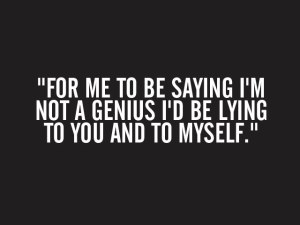#WhyIRecycle
I chose to focus on the topic of recycling. I try to be very conscious about the way that we treat the Earth. Recycling is a very simple thing to do and I try to encourage my friends to do it as much as I can. Because of this, I created #WhyIRecycle. The goal of my project was to raise awareness about the benefits of recycling. I also wanted to encourage other people to recycle if they don’t already. My primary audience was people who recycle. My hope was that my primary audience would then extend to people who don’t recycle and that they would start recycling too. My project represents Clay Shirky’s definition of civic value and Henry Jenkins’ definition of civic media for a few different reasons. “It is value created by the participants, but enjoyed by society as a whole,” states Shirky about civic value in his TED Talk. Henry Jenkins writes, “Civic media is content intended to increase civic engagement.” My project included participants contributing ideas or stories or statistics. If this project meets the goal and people do share the hashtag, more people will recycle and the Earth will be a better and more sustainable planet for our society and existence.
I chose Twitter as my primary medium for my hashtag. A number of millennials and people who are conscious about the environment use Twitter so it would also appeal to many people. I think that Twitter was the best medium for my project because Twitter is a good way to share quick comments or pieces of information. It is also easy to share other tweets, pictures/infographics, or videos. Because of this, I used pictures to spread my message initially. I took a screenshot of what my project was trying to accomplish and shared it. My followers could then view the picture, share it and then use the hashtag. Another part of my project included tweeting at specific accounts with the details of my project. If accounts with more followers than me could spread my project, the hashtag would be much more successful because it would reach out to more followers than just myself. As I got further into the project, I branched out to sharing other tweets, infographics and videos. I shared the infographic I made earlier in the quarter and a video that talked about the benefits of recycling. I also shared more personal reasons or examples in the hopes that people would connect with that. This use of media and other active Twitter users really contributed to the overall spreadability of my project.
One thing about spreadability that I thought was important during my project was the role that we play in social media interactions. Jenkins writes, “In a spreadable model, there is not only an increased collaboration across these roles but, in some cases, a blurring of the distinctions between these roles.” While I was the initial producer and marketer, I wanted to make it so that different people spread their own media and marketed the project. I didn’t want the audience to be one specific group of people; I wanted it to evolve. I think that my project accomplished this because multiple people shared the purpose of the project and multiple produced their own tweets or ideas online. I also think my project touched on the idea of social currency. The environment and climate change are hot topics in our world and it is something that can be discussed at length. Maria Konnikova of The New Yorker states that social currency is “something that makes people feel that they’re not only smart but in the know.” If people feel as if they are involved in a positive movement, it adds to their social currency. Both of these concepts added to the overall spreadability of my project.
I am most proud of the way my project spread, just within a few days. Multiple people have tweeted the hashtag with the reasons of why they recycle. It was cool to see them tweet and to have those tweets retweeted or liked. A few of my friends used the hashtag because they know that recycling and trying to be sustainable means something to me, which also made me proud. I learned about how difficult it can be to create something that is spreadable. I really had to invest a lot of time and effort for people to catch on and share why they recycle. I think this shows that digital writing has a learning curve that even our generation hasn’t mastered.

